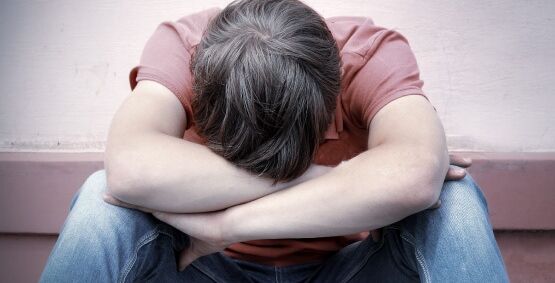Problematic sexualised behaviour

Children develop sexualised behaviours as they grow. Sexual curiosity, exploration and experimentation are normal stages of child development, but can be confronting for parents and carers.
Depending on the age of the child or young person, looking, touching, exploring and talking about their bodies and sex is a normal part of development. When a child acts in a way that that is more advanced than the behaviour that you would expect at that age, these behaviours may be considered problematic or harmful.
There are many reasons that a child or young person may exhibit problematic sexualised behaviours. If a child or young person has an level or sexual knowledge or sexualised behaviours that is inappropriate for their stage of development, this may be due to exposure to pornography or other adult content. Problem sexual behaviours can be, but are not always the result of sexual abuse.
Problematic sexualised behaviour describes a range of sexual behaviours that are outside the developmental norm of a child or young person. They can be self-directed or directed towards others. These behaviours can be non-contact, for example sexualised conversations or gestures. They can also involve contact, for example non-consensual touching of others.
Other concerning behaviours can include sexual interest in children or adults of a very different age, sexual behaviours preventing other activities, aggressive sexual behaviours or compulsive habits.
Infant, toddler and preschool
Sexual behaviours of children aged 0–4 years
Age-appropriate
These include:
- touching or rubbing their own genitals
- enjoying being nude
- showing others their genitals
- playing doctors and nurses
- playing mummies and daddies
- touching or looking at the private parts of other children or familiar adults.
Concerning
These include:
- persistent masturbation that does not cease when told to stop
- forcing another child to engage in sexual play
- sexualising play with toys such as ‘humping’ a teddy bear
- touching the private parts of adults not known to the child
- using slang words/dirty language for bathroom and sexual functions, talking about ‘sexing’
- chronic peeping behaviour.
Very concerning
These include:
- persistently touching or rubbing themselves to the exclusion of normal childhood activities
- hurting their own genitals by rubbing or touching
- simulating sex with other children, with or without clothes on
- oral sex
- sexual play involving forceful anal or vaginal penetration with objects.
Early school years
Sexual behaviours of children aged 5–7 years
Age-appropriate
These include:
- self-touching including masturbating
- playing ‘show me yours/I’ll show you mine’ with same-age children
- hearing and telling age-appropriate dirty jokes
- playing mummies and daddies
- kissing/holding hands
- mimicking or practicing observed behaviours such as pinching a bottom.
Concerning
These include:
- continually rubbing/touching their own genitals in public
- persistent use of dirty words
- wanting to play sex games with much older or younger children
- continually wanting to touch the private parts of other children
- chronic peeping behaviour.
Very concerning
These include:
- touching or rubbing themselves persistently in private or public to the exclusion of normal childhood activities
- rubbing their genitals on other people
- forcing other children to play sexual games
- sexual knowledge too advanced for their age
- talking about sex and sexual acts habitually.
Pre-adolescent
Sexual behaviours of children aged 8–12 years
Age-appropriate
These include:
- occasional masturbation
- playing ‘show me yours/I’ll show you mine’ with peers
- kissing and flirting
- genital or reproduction conversations with peers
- dirty words or jokes with their peer group.
Concerning
These include:
- attempting to expose others’ genitals
- sexual knowledge too advanced for their age once context is considered
- preoccupation with masturbation
- mutual masturbation/group masturbation
- single occurrence of peeping, exposing, obscenities, pornographic interest (sources include websites, instant messaging, SMS, social media and forums)
- stimulating foreplay or intercourse with peers with their clothes on.
Very concerning
These include:
- compulsive masturbation, including task interruption to masturbate
- repeated or chronic peeping, exposing or using obscenities
- chronic pornographic interest including child abuse images* (sources include websites, instant messaging, SMS, social media and forums)
- degradation/humiliation of themselves using sexual themes
- degradation/humiliation of others using sexual themes
- touching the genitals of others without permission*
- sexually explicit threats – written or verbal*
- forced exposure of others’ genitals*
- simulating intercourse with peers with clothes off
- penetration of dolls, children or animals*.
*For children aged 10–12, these behaviours may constitute criminal offences such as indecent assault, indecent act, or sexual assault (common law).
Getting help
If your child is exhibiting concerning or very concerning sexual behaviours therapeutic treatment is available.
For more information on problem sexual behaviour, please refer to the DHHS website.